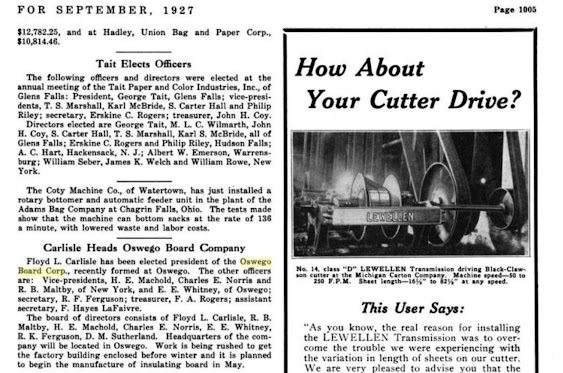We've been very fortunate to find labels on the various materials that went into the construction of the Veblen House. The
housewrap was called Sisalkraft. The
wood sheathing appears to have been shipped by the Weyerhauser company from the west coast. The insulation--all one or two inches of it--was a Weyerhauser product out of Minnesota called
Balsam Wool.
Though the kitchen and bathrooms in Veblen House are coated with traditional plaster, the walls in other rooms were made of wallboard containing wood fibers pressed tightly together. Until now, the origin of the wallboard has been a mystery. Various kinds of wallboard offered a cheaper, lighter alternative to plaster for indoor walls and ceilings. Most homes now use drywall, also known as plasterboard or sheetrock, made with a combination of paperboard and fireproof gypsum. But though drywall was invented in 1916, it didn't come into widespread use
until the 1940s, ten years after Veblen House was built.
Homasote is another kind of wallboard, and that name has come up occasionally in walkthroughs of the house. But though Homasote was manufactured in nearby Trenton, it was comprised of paper fibers rather than wood, and according to
the wikipedia entry was not marketed until the 1940s.
While most of the wallboard in the house was hauled to a landfill as part of the asbestos removal, we were able to save some. Fortuitously, the asbestos had been found not in the wallboard but in the skincoat applied thereon, presumably to make the wallboard look more like plaster. Since no skincoat was applied in closets, we convinced the town to save those sections of the house's "fabric."
And there, between the studs on the back of the wallboard in the vestibule closet, was a label, upside down near the floor.
The label calls the material Insulating Board, to be used outside or inside the frame to provide some measure of insulation and draft reduction.
This quote, believed to come from a book entitled Twentieth Century Building Materials: History and Conservation, serves as a good description:
"Fiberboard is a composite hardboard material made from pressure molded wood fibers. It had early precedents in the late 18th century, but was first manufactured in large quantities in the 1920s, with its use expanding in the 1930s and 40s. Fiberboard (or wallboard, as it is commonly known) was marketed by various companies, such as Masonite. It was used as sheathing for roofing and siding on the exterior, for insulation, and for interior walls."
Another excellent online source comes from the U.S. Forest service, entitled Early 20th-Century Building Materials: Fiberboard and Plywood. It describes what at that time were innovative products just beginning to come into widespread use.
At the bottom of the partially torn label on the Veblen House fiberboard was just enough information to track down the manufacturer, Oswego Board Corp, NY. That name in turn stirred up a few fragments on the internet about that company, which had just formed a few years earlier, with its newly elected president, Floyd L. Carlisle.
Another snippet, from
Poors publication, fills in the missing letters on the other name at the bottom of the label: Johns-Manville, which, according to the NY Times, in 1927 teamed with Oswego Board Corporation to manufacture and distribute "a new type of sheathing and insulating board."
If construction of the plant began in 1927, our 1931 prefab must have been one of the first to be built with this new product.
Without that one label exposed and left undisturbed during asbestos removal, the story of the Veblen House wallboard might have been lost.




No comments:
Post a Comment